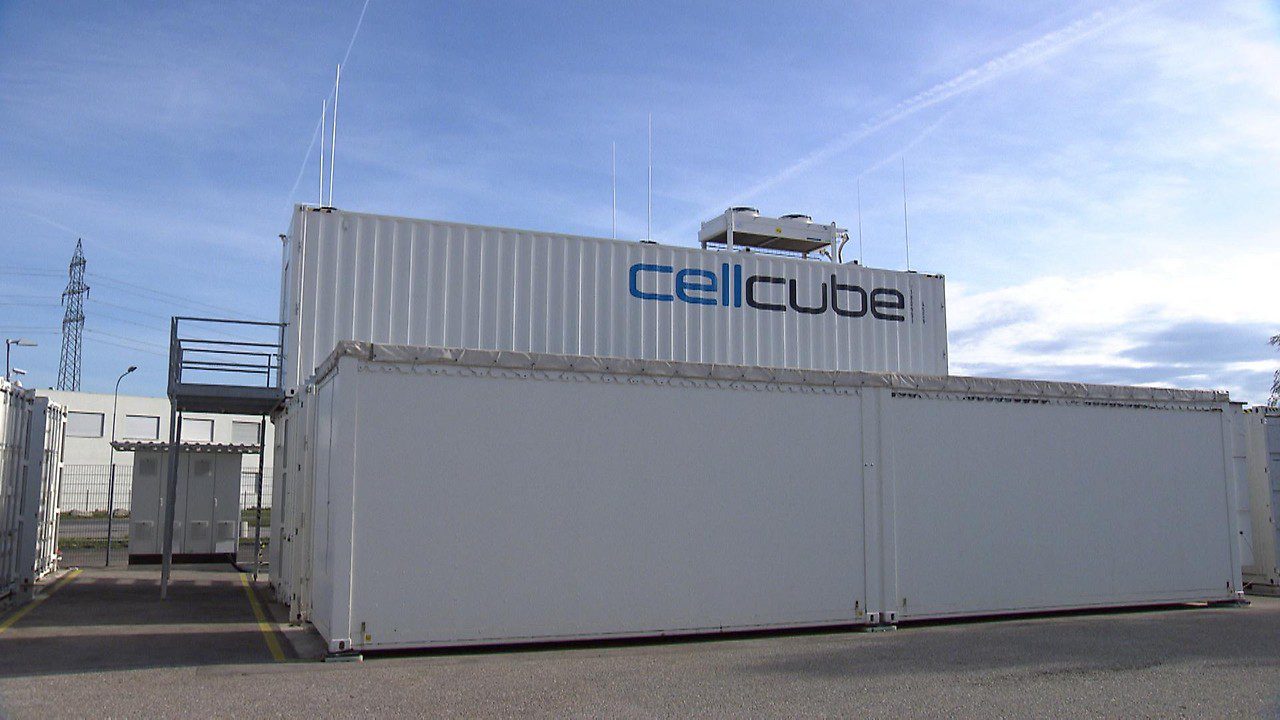What looks like a simple container from the outside is the so-called CellCube – or to put it another way: a large battery. In containers in Wr. Neudorf (Modeling District) are manufactured by the company Enrox, the green electricity is stored on a large scale. “Specifically, we are producing a long-term storage device, i.e. a battery with which we can store electricity coming from the sun or wind for several hours and then provide it when needed, Explains managing director Alexander Schönfeld.
Company from Wr. However, Neudorf does not rely on lithium-ion batteries for storage, such as those built into smartphones, but on vanadium. “Vanadium is an element. It is obtained primarily as an additive for steel refining. For example, it is known as a vanadium-chromium wrench,” says Martin Harrer, head of research and development “In our batteries, the vanadium dissolves and then the energy is stored in the vanadium.”

Green electricity should be available round the clock
Cellcube storage solutions are already in use in more than 20 countries, such as Arkansas in the United States, Sweden and Uganda in Africa. The goal is to have green electricity available round the clock in the future, even when the wind is not blowing or the sun is not shining. More recently, Lower Austria has also been working closely with Windcraft Simmansfeld.
In concrete terms, a feasibility study would look at how a storage system should be designed to be able to absorb as much wind and solar energy as possible. “A grid can only absorb a limited amount of electricity. When this amount is reached, the network operator controls. This means that the wind farm is stagnant or the amount fed into it has decreased. Solar power is no longer fed either. The moment this happens, our long-term storage system can absorb the excess power and wait until the grid is ready to absorb power again,” explains Schönfeld, managing director.

Batteries are durable and non-flammable
Battery cells are completely built into the Wr. Neudorf. For this purpose, the supplied vanadium electrolyte is first tested in detail, then the battery cells are assembled and pressed together and finally subjected to a leak test. Compared to ordinary batteries, vanadium has many advantages, Harrer says: “The first advantage is the service life. Our batteries live up to 25 years without loss of capacity. The second is safety. Our batteries are not flammable. And the third is this. “Our electrolyte is completely recyclable. This means it can be pumped out after 25 years and used in the next battery.”
Last but not least, the cellcubes must also supply energy when everything else is dark. Because even in the event of a power outage for a long time, the containers that are in Wr. Neudorf can be produced, green electricity can be bought.

Freelance twitter maven. Infuriatingly humble coffee aficionado. Amateur gamer. Typical beer fan. Avid music scholar. Alcohol nerd.







